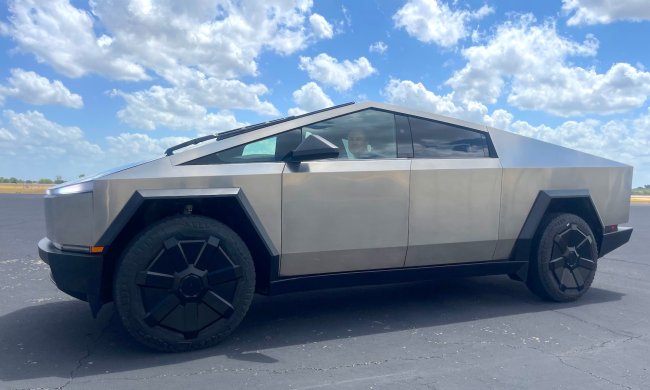What appears to be a new Tesla Cybertruck prototype has been spotted testing on public roads.
As relayed by Electrek, Twitter user Greg posted a photo Thursday showing a Cybertruck with a different front-end design from what we’ve seen previously. The front bumper has a more distinct rectangular opening, possibly for cooling. This prototype also has triangular side mirrors, as opposed to the squared-off ones seen previously.
The truck also sports a massive single windshield wiper, something that has appeared on previous prototypes, but that Tesla CEO Elon Musk has said won’t make it to production, according to Electrek. It will be interesting to see what alternative solution Tesla comes up with for cleaning that massive flat expanse of glass.
Electrek believes that this truck is one of at least two “beta” prototypes currently out on the road, distinct from another vehicle spotted in Palo Alto, California, last week. Tesla considers beta prototypes to be a step closer to production than initial alpha prototypes, so while there have been several Cybertruck spotting before, this might be an indication that the truck’s angular design will be preserved in the transition to production-spec.
Tesla unveiled the Cybertruck in 2019 and production was originally scheduled to start in 2021. That was delayed multiple times, though, and customers will still have to wait a while to put a Cybertruck in their driveways. During a quarterly earnings call in January, Musk said that while Tesla is aiming to start production by the end of the year, it won’t fully ramp up until 2024. Musk doesn’t expect Tesla to deliver vehicles in significant quantities until then.
During the earnings call, Musk said the Cybertruck would get Tesla’s next-generation Hardware 4 suite of sensors and computers for driver-assist tech but didn’t provide an update on specifications, which have fluctuated a bit since the truck was unveiled. At the time, Musk said the Cybertruck would be offered in single-motor rear-wheel drive and dual-motor and tri-motor all-wheel drive configurations, but in 2021 he also mentioned a four-motor version, saying it would be the first produced.
Tesla has lost the lead in electric trucks. Since the Cybertruck was unveiled, other automakers have launched their own electric pickups, including the Ford F-150 Lightning, GMC Hummer EV, and Rivian R1T, with the Chevrolet Silverado EV, GMC Sierra EV, and an electric Ram 1500 waiting in the wings. If it finally goes on sale, the Cybertruck will likely rely primarily on its unique design and the general appeal of the Tesla brand to attract customers from these more conventional alternatives.


